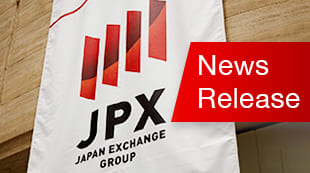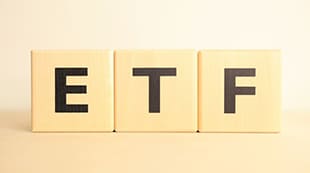Search results 191-200 / 10648
- sort:
- relevance
- latest

TOKYO PRO Market | Japan Exchange Group Overview What is TOKYO PRO Market? Professional investors J-Adviser System Listing Listed Companies Delisted Companies Securities Under Supervision & Securities to Be Delisted Application Forms Initial Listing Form J-Adviser Qualification Form...

Venture Funds | Japan Exchange Group Overview Characteristic Method of utilization Risks Listing Criteria for Listing Delisting Trading Listed Issues Delisted Issues Timely Disclosure Rules...

Outline | Canceling Executed Transactions | Japan Exchange Group Outline Summary of the Rules Points to Consider with Regard A basic premise of securities trading is that once a transaction is executed, it should not be canceled and settlement should be carried out to completion. This certainty of settlement is one of the fundamental sources of reliability in a securities market. However, an erroneous order may cause an abnormally large and unforeseen amount of transactions to be executed. This may lead to settlements not being completed for an extended period of time. When this occurs, functions of the securities market become paralyzed, causing a major disruption. To address such a situation, the Tokyo Stock Exchange (TSE) has established a system for canceling already-executed transactions (the Rules for Canceling Executed Transactions). This will only apply to transactions involving erroneous orders with extremely high potential to impede the settlement of transactions over an ...

Overview | Trading Rules of Domestic Stocks | Japan Exchange Group Overview Trading Hours Types of Transactions Trading Unit Transaction Methods Special Quotes Parameters Daily Price Limits Tick Size Traditionally, trading of stocks was conducted by traders physically on the exchange's trading floor. Tokyo Stock Exchange (TSE) first introduced a computerized trading system for some issues on the TSE 2nd Section, which was one of the market divisions at the time, in January 1982. After this, trading using computerized systems expanded, and the physical trading floor was completely closed on April 30, 1999. Since then, all regular trades of stocks have been conducted through computerized trading systems. The current trading system, which has been in place since January 4, 2010, is called arrowhead. Now there are more than 3,000 listed companies on TSE and orders are in the tens of millions a day, but this huge number of transactions is ...

Margin Trading | Japan Exchange Group Overview of Margin Transactions Overview Purpose and Mechanism of Margin Transactions Treatment of Rights in Standardized Margin Trading Overview Rules for treatment of rights in negotiable margin trading Scope and method of treatment of rights in standardized margin trading Auction for rights Selection and Disqualification of Standardized/Loan Margin Trading Issues Selection Criteria Disqualification Criteria Numbers of Issues Over Time Restrictions on Margin Trading and Loans for Margin Trading...

Acquiring Own Company Shares through the TSE Market | Japan Exchange Group When listed companies acquire their own company shares through the TSE market, they have to comply with Cabinet Office Ordinance on Restrictions on Securities Transactions, etc. TSE offers ToSTNeT-2 & ToSTNeT-3 in addition to auction market to acquire the shares in accordance with the ordinance. Please refer to the documents below for the details of the procedure and sample schedules for listed companies. Q&A on Own Share Repurchase on the TSE Market Sample Schedules of Acquiring Own Shares with Prior Announcement Guidelines Concerning the Acquisition of Own Shares Since repurchase of own shares (also known as share buybacks) involve a listed company buying its own shares from the market, persons related to the listed company may be concerned at whether such buybacks fall under market manipulation or their acts violate insider trading rules. In order for companies ...

Administrative Restrictions | Restrictions on Trading | Japan Exchange Group Administrative Restrictions Margin Trading Restrictions Short Selling Restrictions TSE puts administrative restrictions on trading and brokerage as part of market administration if an abnormal situation is observed or anticipated. For example, if whole market heats up abnormally such as prices on lots of issues rise and trading volume swell up drastically for days at a time, investors might be uncomposed and could suffer unexpected amount of loss as a result. When such abnormal overheat is anticipated, TSE puts administrative restrictions on all issues such as reduction of daily price limit range, margin trading restrictions etc. In addition to the situation mentioned above, when abnormal situation is observed or anticipated on a certain issue, TSE also puts restrictions on the issue such as trading halt, reduction of daily price limit range, prohibition of market orders, prohibition of making purchases on trading participants’ proprietary ...

Trading resumption through a system reboot | Japan Exchange Group Handling of entrusted orders Handling of partially executed orders Price continuity and application of regulations Handling of market information after the trading resumption Limitation of short selling restrictions In response to the system failure that occurred within the arrowhead cash equity trading system on October 1, 2020, Tokyo Stock Exchange, Inc. (TSE) established the Council for Recurrence Prevention Measures and the Specialist Working Group (WG) to consider rules and procedures for trading resumptions which happen after a trading suspension resulting from a system failure. Discussion has been proceeding since then. The Council has confirmed that a system reboot can be considered as an acceptable course of action in cases where it is required to resume trading. If a failure has occurred after the start of trading and trading is resumed through a reboot, execution completion notices which have been processed normally ...

Strengthening the Functions of the Cash Equity Market | Japan Exchange Group Information on Revision of Rules Changes in Publication Time of JPX Website Links Tokyo Stock Exchange, Inc. (TSE) recognizes the need to respond to changes in the market environment and the diversifying needs of investors, while also further improving convenience for market users, international competitiveness, and resilience. To tackle these issues, in May 2021, TSE established the Working Group for Strengthening the Functions of the Cash Equity Market. Based on the discussions of the Working Group, TSE then published the Action Program for Strengthening the Functions of the Cash Equity Market in October 2021. As described in the Action Program, to strengthen the functions of the cash equity market, TSE plans to extend trading hours by 30 minutes and introduce a closing auction in conjunction with the update of the cash equity trading system (arrowhead). The system update is ...

Overview | ToSTNeT Market | Japan Exchange Group Overview Types of Trading Details of ToSTNeT Trading Others ToSTNeT (Tokyo Stock Exchange Trading NeTwork System) trading is off-floor trading on Tokyo Stock Exchange. Since the launch of single-issue trading (known as large-lot trading until September 30, 1999) and basket trading (ToSTNeT-1) on June 29, 1998 and closing price trading (ToSTNeT-2) on August 7, 1999, the ToSTNeT market has been used for off-auction trading to accommodate large-lot and basket trades that are difficult to execute smoothly in the trading session (trading by auction method). However, as trading has become more sophisticated and diversified in recent years, there has been a growing need for a more flexible use of the market. Therefore, on January 15, 2008, the trading hours were expanded, the ToSTNeT market was made independent from the auction market (auction market), and an off-auction trading ...














